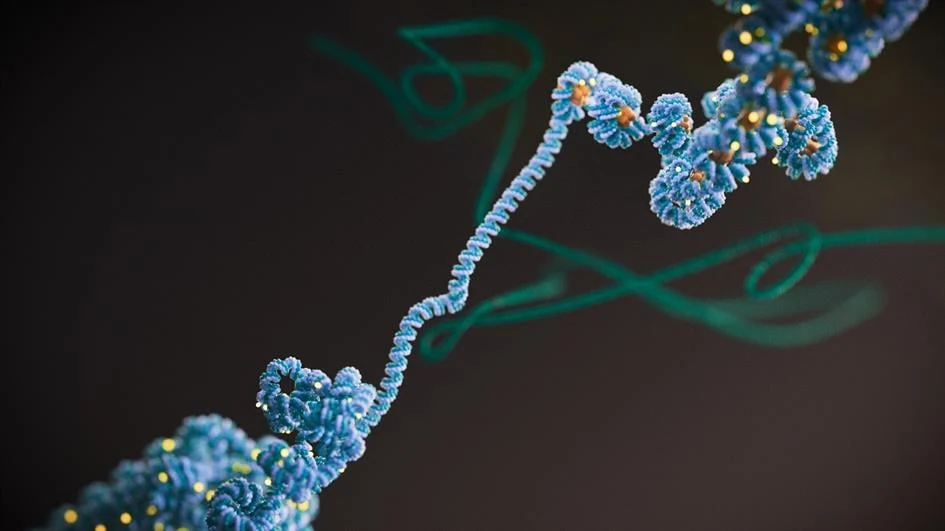Unintelligent Designer News
Correcting the Incompetent Designer's Blunders
Correcting the Incompetent Designer's Blunders
What are these 'cancer vaccines' I'm hearing about? And what similarities do they share with COVID vaccines?
Creationists would have us believe that cancers are caused by 'Sin' in some magical process that makes chemistry and physics do something they wouldn't do on their own. This also makes Creationists feel smug because they've blamed cancer victims for their own condition, and absolved their putative creator god of any responsibility.
That idea arose in the fearful infancy of our species when we lived in what seemed to be a demon-haunted, magical world in which there was a simple, teleological answer to every mystery - God did it if it was a good thing, or, if it was a bad thing, an evil demon did it. Cancer, like mental illness, was a symptom of moral weakness for allowing the demon to take over, so the sufferer deserved it.
But we are grown up and know better now.
For instance, we know that cancers almost always have one of four causes:
- Viruses. For example liver cancer can be caused by hepatitis B and cervical cancer can be caused by the human papillomavirus.
- Inherited genetics. Rare because there is strong selection pressure to eliminate lethal genes from the gene pool.
- Mutagenic substances such as tars in cigarette smoke, benzene and asbestos fibres.
- Errors in DNA replication during cell division for growth, repair and replacement. Some of these may include a genetic predisposition.
So why do these errors arise?
This involves something that I have yet to see a Creationist give a satisfactory explanation for in terms of the putative intelligent [sic] designer.
The errors arise primarily because the mechanism for replicating the DNA during cell division is imperfect, resulting in one or both daughter cells having errors in its DNA. This is so common that there is a correction mechanism for repairing DNA - which should not be necessary if the process had been designed to work properly in the first place. Normally, if this error is serious and the DNA can't be repaired, the cell will self-destruct in a process known as apoptosis. This process itself is imperfect and sometime fails, particularly if the person has a genetic mutation that prevents it happening, so predisposing them to these sorts of cancers.
But why is this complex process necessary in the first place
In evolutionary biology terms this is perfectly understandable since evolution is unplanned and necessarily utilitarian - whatever works to give an advantage is retained and built upon, no matter how suboptimal.
The process for cell replication that evolved when multicellular organisms evolved out of single-celled organisms was the same one that had been used for single-celled organisms when the entire genome had to be copied into the daughter cells. But the big advantage of multicellularity is cell specialisation and division of labour. This means that specialised cells only need the genes to carry out their speciality and don't need all the others, which are replicated needlessly in every one of the tens of trillions of cells that make up a human body and most have to be switched off by a complex process of epigenetics.
Meanwhile, all that unnecessary DNA replication not only wastes resources but increasesd the risk of the defect tha causes cancer.
In intelligent [sic] terms, it makes no sense since a perfect, intelligent, omniscient designer would not settle for a utilitarian suboptimal process. It would have designed a cell replication process which replicated only the genes needed by a specialised cell for example. And it would have designed a DNA replication process that didn't require correcting.
In brief then, if you believe in intelligent [sic] design, you must agree that cancers are either caused by viruses that are designed for the purpose, or because of the imcompetence of the designer.
But human medical science is making progress in correcting these problems with vaccines against the viruses and more recently, bespoke vaccines against the specific cancers caused by errors in cell replication, using a similar mRNA vaccine technology to that used to create the CAVID vaccines that have transformed the pandemic.
In the following article, reproduced from The Conversation, Sathana Dushyanthen, an academic specialist & lecturer in cancer sciences & digital health at The University of Melbourne, explains what these vaccines are and what similarities they have with the COVID vaccines. The article has been reformatted for stylistic consistency. The original can be read here.

What are these ‘cancer vaccines’ I’m hearing about? And what similarities do they share with COVID vaccines?
Sathana Dushyanthen, The University of Melbourne
Barely a month goes by without headlines announcing yet another advancement in cancer vaccines.
Just last month, the United States Food and Drug Administration (FDA) granted breakthrough therapy designation to Moderna and Merck’s skin cancer vaccine. This allows expedited development and review of drugs intended to treat serious conditions.
We already have a vaccine to prevent human papillomavirus (HPV), which causes cervical and other cancers. We also have a vaccine to protect against the hepatitis B virus, which can cause liver cancer.
But you may have heard of new types of cancer vaccines being developed using technology similar to that used for COVID vaccines. Decades before COVID vaccines, scientists had been working on messenger ribonucleic acid (mRNA) vaccines targeting cancer.
Rather than preventing disease, these vaccines are a personalised treatment for cancer, to combat disease.
How do they work?
Science in Motion.
mRNA works by injecting only the genetic instructions and allowing the body’s cells to make part of the cancer protein (antigen) itself. This trains the immune system to develop antibodies against the protein.
When these same proteins are present on an invading tumour cell, the immune system stimulates an immune response against it.
While COVID mRNA vaccines respond to one antigen – the spike protein on the outside of coronavirus – cancer vaccines act on several antigens present on the tumour surface.
The mRNA cancer vaccines train the patient’s immune system to fight their own cancer. Most trials are manufacturing vaccines for individual patients based on the specific antigens present on their tumours.
It takes around two months to produce a vaccine.

To make these vaccines, a sample of the patient’s tumour and healthy tissue is taken. These samples are DNA-sequenced to compare differences between the DNA in the cancerous cells and the healthy cells.
Scientists identify problem mutations driving disease. These can then be used as antigen targets in the mRNA vaccine.
Bespoke approaches allow scientists to target a wider range of cancer antigens. Targeting multiple antigens decreases the odds that cancer cells will mutate and become resistant to vaccines, because the immune system attacks on multiple fronts.
Personalised medicines are extremely expensive because they are bespoke products. Manufacturing costs for bespoke treatments remain high. However, with rapidly falling costs of different aspects such as genome sequencing (some companies are now offering genome sequencing for just US$100), sequencing the entire genome is becoming more viable.
As large-scale manufacturing increases in future for off-the-shelf vaccines, there will be resource efficiencies that reduce cost.
What vaccines are in development?
In December 2022, Moderna and Merck (known outside the United States and Canada as MSD) published the results of its early phase (2b) clinical trial. The trial was investigating a combination therapy of an mRNA vaccine and immunotherapy (a drug that stimulates an immune response) in advanced stage melanoma patients.
After one year of treatment in 157 patients, they found the combination reduced the risk of cancer recurrence or death by 44%.
2/x Their cancer vaccine is personalised and called called mRNA-4157/V940. What's that? It means that it targets mutations or abnormalities only seen for that cancer. This actives your immune system 🦀 . Good video here 👇 https://t.co/Q3k88Jyksy
— Dr Lennard Lee (Oxford University) (@drlennardlee) February 27, 2023
BioNTech has several mRNA cancer candidates in the works, including for advanced melanoma, ovarian cancer and non-small cell lung cancer. It will release results from its own phase 2 melanoma trial (of 131 patients) using immunotherapy and an mRNA vaccine combination later this year. Its primary aim is to measure cancer progression and survival over 24 months in previously untreated patients.
A third company called CureVac is also developing mRNA vaccines targeting a range of cancers including ovarian, colorectal, head and neck, lung and pancreatic.
CureVac has a deal with Tesla, the electric car manufacturer, to develop small, portable mRNA bioprinters to automate the process of producing patient mRNA. These can be shipped to remote locations where they are able to churn out vaccine candidates based on the DNA template (recipe) fed into the machine.
A lot of these vaccines, including those targeting cancer, are in pre-clinical to phase 1 stages of development, to test the effects and side effects in the laboratory, animal models or small groups of patients.
When will they become available?
Overseas, Moderna and Merck’s mRNA cancer vaccine was fast-tracked for review by the US FDA in February 2023.
Australia’s Therapeutic Goods Administration has not approved the use of mRNAs for use either alone or with other cancer treatments yet.
World's first cancer vaccine one step closer to reality: Given 'breakthrough' status by FDA https://t.co/3zMRzM4pRx
— Daily Mail Online (@MailOnline) February 24, 2023
In Australia, BioNTech is establishing its Asia-Pacific mRNA clinical research and development centre in Melbourne, in partnership with the Victorian government. This would develop mRNA vaccines for research and clinical trials, including personalised cancer treatments.
Meanwhile, Moderna will develop Australia’s first large-scale mRNA vaccine facility at Monash University by 2024, in partnership with the state and federal government. This will give Australians priority access to mRNA vaccines made locally.
What else could the technology be used for?
Aside from cancer, there is huge potential to use mRNA technologies across many gene therapies.
There are studies underway testing mRNA vaccines for various diseases such as evolving COVID strains, seasonal influenza, malaria, HIV, cystic fibrosis and even allergies, giving new hope for many previously incurable diseases.
This article is republished from The Conversation under a Creative Commons license. Read the original article.
What I've yet to see is a Creationist give a grown-up answer to this glaring evidence of incompetence in design with its needless complexity, prolific waste and failure to plan, without resorting to religious superstition and demonstrating why Creationism is not science.



No comments:
Post a Comment
Obscene, threatening or obnoxious messages, preaching, abuse and spam will be removed, as will anything by known Internet trolls and stalkers, by known sock-puppet accounts and anything not connected with the post,
A claim made without evidence can be dismissed without evidence. Remember: your opinion is not an established fact unless corroborated.